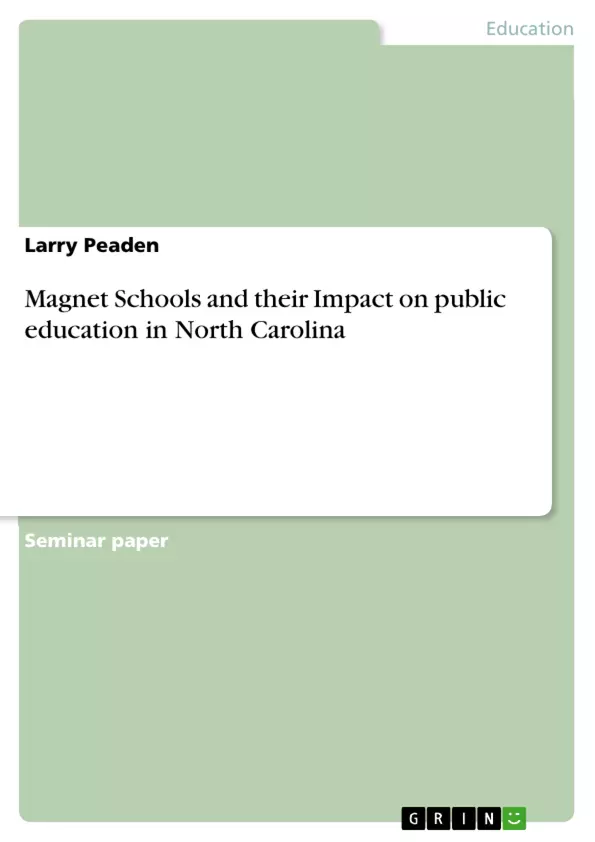This paper explores the concept of public magnet schools. Research included in this paper explains what a magnet school is as well as what the purpose of having them is. A brief history of magnet schools in the United States is provided through Magnet Schools of America. There are also a variety of types of magnet schools as well as misconceptions about magnet schools that will be addressed by evidence from research. There is also data about the performance of magnet schools, the steps to how a school becomes a magnet school, and the effects of magnet schools in the state of North Carolina.
Inhaltsverzeichnis (Table of Contents)
- Impact of Magnet Schools
- History
- Success and Statistics
- Magnet Schools in North Carolina
- Federal Guidelines
Zielsetzung und Themenschwerpunkte (Objectives and Key Themes)
This paper explores the concept of public magnet schools, their history, performance, and impact, particularly in North Carolina. The paper aims to provide an overview of magnet schools as an educational alternative, highlighting their benefits and potential challenges.
- History and evolution of magnet schools in the United States
- Academic performance of students in magnet schools compared to traditional and private schools
- The role of magnet schools in promoting diversity and integration
- Federal guidelines and regulations for magnet schools
- The impact and effectiveness of magnet schools in North Carolina
Zusammenfassung der Kapitel (Chapter Summaries)
The paper begins with a brief overview of magnet schools and their purpose. It then delves into the history of magnet schools, tracing their origins back to the 1960s as a response to desegregation efforts. The paper explores the success rates of magnet schools through research findings, highlighting their academic performance compared to traditional and private schools. The paper also examines the impact of magnet schools in North Carolina, exploring their role in promoting diversity and providing specialized programs. Finally, the paper discusses the federal guidelines that magnet schools must adhere to.
Schlüsselwörter (Keywords)
The key terms and concepts explored in this paper include magnet schools, public schools, North Carolina, desegregation, educational choice, academic performance, diversity, and federal guidelines.
- Quote paper
- Larry Peaden (Author), 2015, Magnet Schools and their Impact on public education in North Carolina, Munich, GRIN Verlag, https://www.grin.com/document/323682



